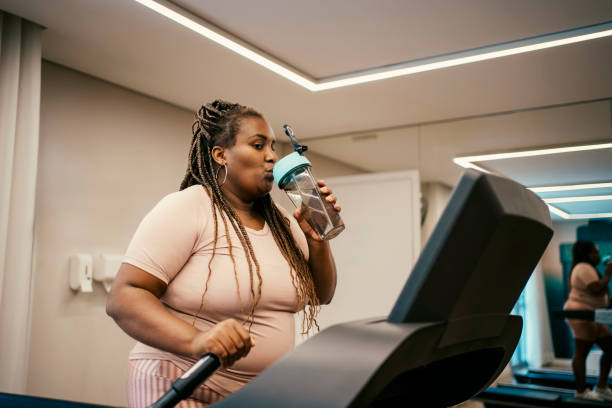(BlackFitness101.com) Time and time again we are reminded of the large amount of health disparities affecting African-Americans in this country. While heart disease leads as the top killer of Americans, it’s something that African-Americans are more particularly affected by. According to the American Heart Association, 44% of A.A. men and 48.9% of A.A. women over the age of 20 years old are living with cardiovascular disease. To add to these numbers, African-Americans are also topping the charts as it relates to high blood pressure, with 42.6% of A.A. men and 47% of A.A. women currently dealing with the condition.
Although the numbers are high, there is still much room and opportunity for improvement within the African-American community. Through increased education regarding nutrition and physical activity, we can effectively address this topic and encourage healthy lifestyle changes.
One of the biggest things that should be stressed is the need for physical activity. Despite your fitness levels, each person has the ability to make small yet beneficial changes to his/her health status. Brisk walking and/or jogging is a great example of this. Even if  starting slow, a light jog can be of benefit. Studies have shown that those who run 1 to 3 times a day have lower cholesterol levels and a reduced risk of cardiovascular disease. In fact, a study done by the Journal of the American College of Cardiology, showed that just 5 to 10 minutes of low intensity running can lengthen life expectancy by a couple of years.
starting slow, a light jog can be of benefit. Studies have shown that those who run 1 to 3 times a day have lower cholesterol levels and a reduced risk of cardiovascular disease. In fact, a study done by the Journal of the American College of Cardiology, showed that just 5 to 10 minutes of low intensity running can lengthen life expectancy by a couple of years.
With a higher than average rate of overweight and obesity within the African-American community, it’s good to know and share that the inclusion of running within a fitness regimen is excellent for weight control. Burning 28% more calories than cycling, running and uphill walking can be excellent for speeding up the metabolism and ridding the body of abdominal fat, another health risk tied to cardiovascular disease.
Those living with diabetes can also count on running to be a beneficial form of management when safely incorporated into their lifestyle. Running can increase the rate at which glucose is taken up and used within the body. Regularly doing so can reduce the need for insulin treatment and medication. Knowing this can be key, as diabetes has a higher prevalence within the African-American community.
When discussing health concerns affecting African Americans, such as cardiovascular disease and diabetes, it’s important to note that high stress and low energy levels can affect the ability to manage symptoms. Both acute and chronic stress can lead to elevated blood pressure and cholesterol levels and a larger amount of fatty acids released into the bloodstream. Left unchecked, heightened stress levels only increase the risk of issues related to cardiovascular disease. Running has been shown to improve our mood due to the release of endorphins in the brain. Anyone who has experienced “runner’s high” knows this to be true. The amount of blood flow throughout the body is increased, boosting our energy levels and reducing the amount and ease of fatigue and muscular exhaustion.
As with any form of exercise, getting our bodies moving through brisk walking, jogging, or a good run can lead to a stronger immune system and help us to fight off disease and illness. Studies have shown that light to moderate running can boost immune system functioning and leave us feeling healthier in our day to day lives.
Walking and running are great forms of movement that can be easily implemented into our daily routines. Before you lace up your sneakers check out some ways in which you can get the most out of your workout.
TIPS
1. Check with your physician if you have cardiovascular disease, diabetes or have been sedentary for a long period of time before starting a new workout regimen.
2. If you are starting out, work your way up gradually. Start with a brisk walk at a pace that works best for you. Over time, slightly increase your pace and/or distance to see continuous improvements.
3. Select walking/running shoes that provide you with proper support to prevent injuries.
4. Aim to stretch your body in-between walks/runs to keep your muscles healthy and limit the risk of injury.
5. Fuel your body with nutrient-dense food both prior to and after your workout.
6. Make it a family occasion. Bring the kids, take the dog out for an extended walk, or grab your loved one for quality time.
Sources;
http://www.cdc.gov/nchs/fastats/black-health.htm
http://www.active.com/running/articles/running-with-diabetes-tips-to-stay-healthy-on-the-road
Staff Writer; Rashida A. Marshall












Leave a Reply